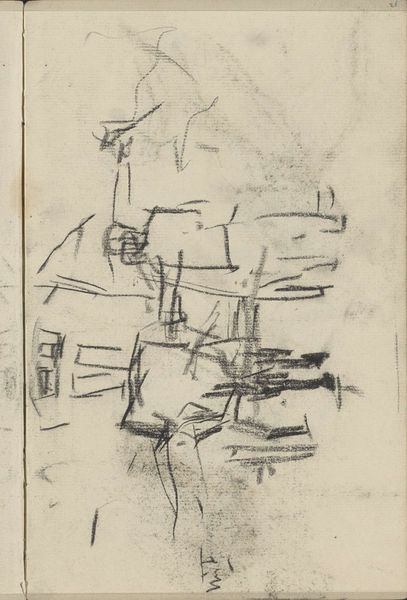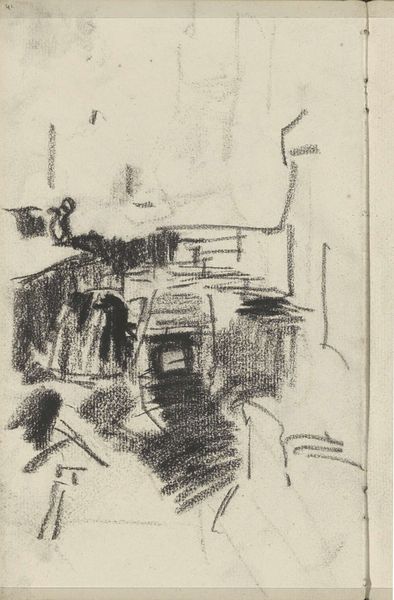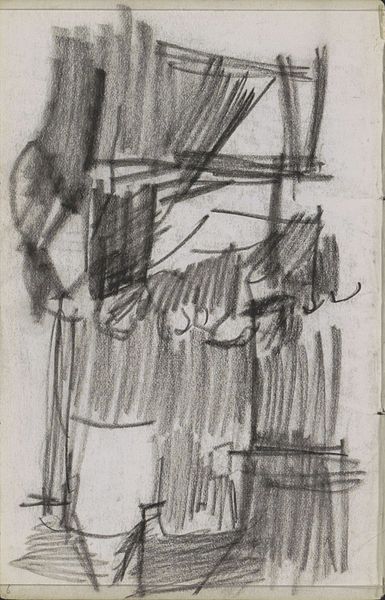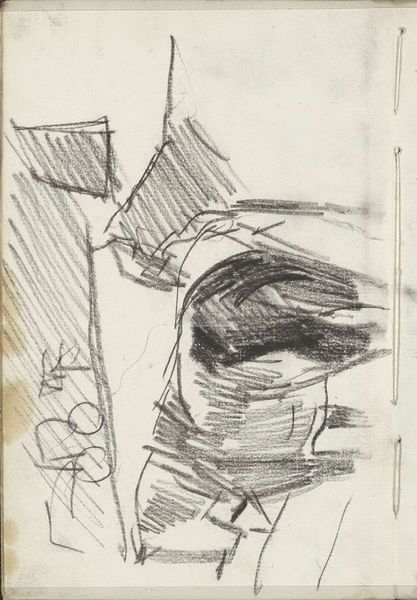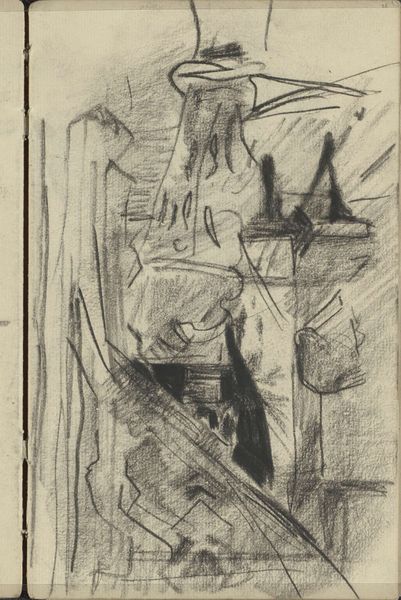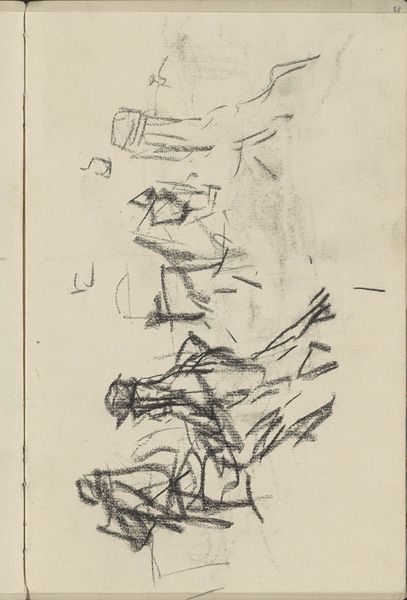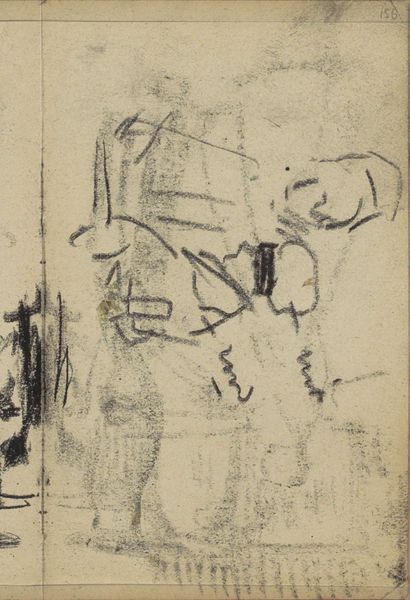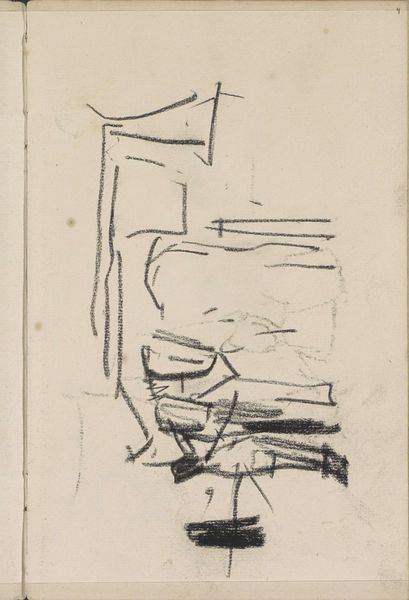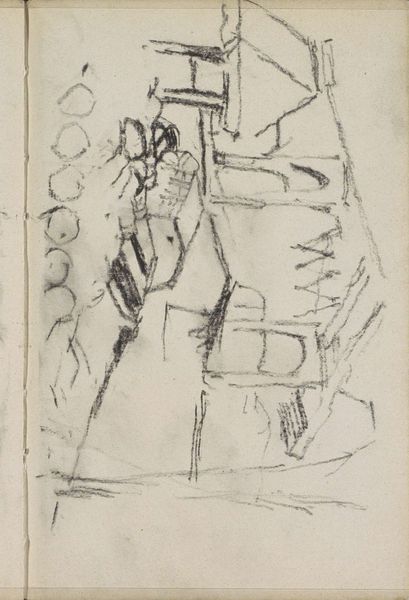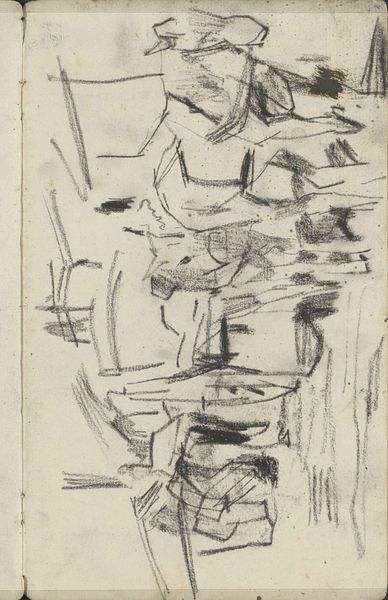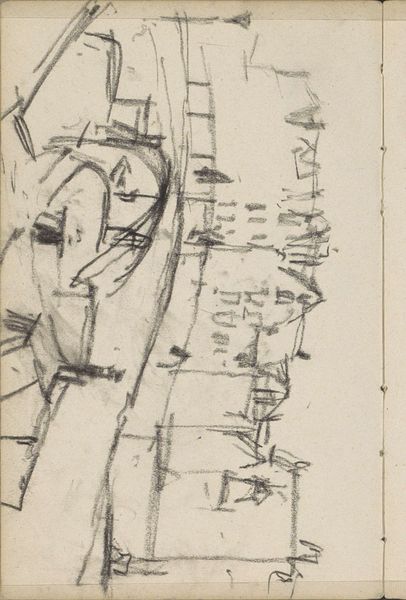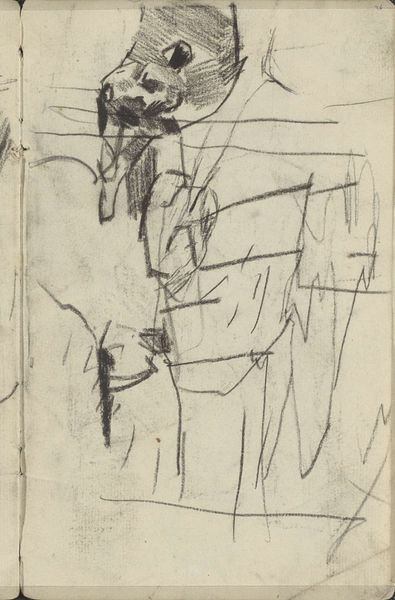
Boten in het Damrak te Amsterdam bij de achterzijde van de Beurs van Zocher 1886 - 1903
0:00
0:00
Copyright: Rijks Museum: Open Domain
Curator: This piece, "Boats in the Damrak in Amsterdam near the rear of the Zocher Exchange", is by George Hendrik Breitner. He probably created it somewhere between 1886 and 1903. Look closely—it’s graphite on paper. Editor: Oof. Raw. Visceral, even. You can almost smell the oily water and hear the clang of metal on metal. It's more feeling than seeing, isn't it? Curator: Precisely! Breitner was a master of capturing the gritty reality of city life. The sketch feels immediate, doesn’t it? Almost like a fleeting glimpse. He probably filled whole sketchbooks with these kinds of studies. Editor: It makes me think about the dockworkers, the anonymous hands that kept Amsterdam's economy afloat. Were they thinking about art? Did Breitner ever try talking with them, I wonder, or was he just observing? Curator: It is a peek into his process—it looks as though the artist wanted to capture not the likeness of the city, but its dynamism. Breitner, deeply influenced by Impressionism and photography, aimed to depict movement and atmosphere over photographic realism. Editor: I feel how this location served as a meeting point between commerce and labour. Who held the power then, and how were those systems reflected or refracted in art? Curator: That tension is key to understanding this moment in Amsterdam's history and the art that came out of it. There were very strong class divides. The art showed life for many different inhabitants. Editor: Art is never created in a vacuum, is it? Sketches like this become so much more powerful when we see them as part of a larger conversation about power, class, and representation. It makes me consider if his representation ever furthered those people's standing, or left them stuck in their stations. Curator: The incompleteness allows us to keep the people alive, too, by asking about their stories. The drawing becomes not an answer but an invitation. Editor: An invitation to think. I see it now as a window into an industrial past. Curator: Exactly. An immediate, raw glimpse into history as it was unfolding.
Comments
No comments
Be the first to comment and join the conversation on the ultimate creative platform.
